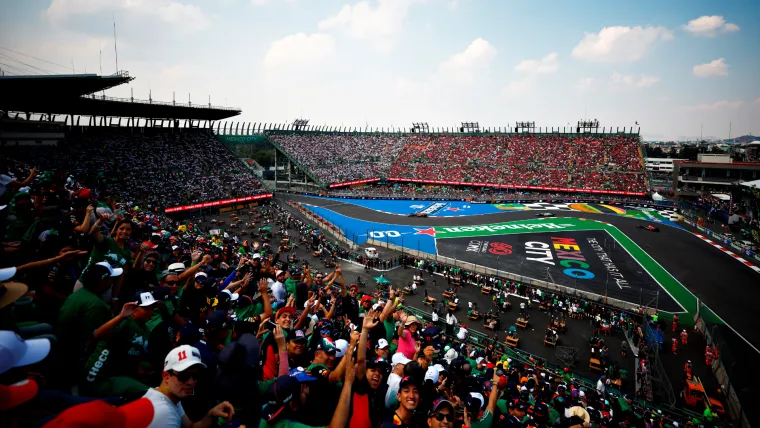The Autodromo Hermanos Rodriguez track is situated over 2,200 metres above sea level, hence the altitude is high and the air is thin.
This means that, despite the enormous start/finish straight at the circuit, the teams run more high-downforce wings, to ensure that they still have adequate grip through the corners.
These elements certainly make overtaking a challenge at the Mexico City Grand Prix but it is still possible, as these three parts of the track demonstrate.
📲 Follow The Sporting News on WhatsApp
Turn one
The longest run towards the first braking zone of any track currently on the Formula 1 calendar, the sudden turn one, two and three complex see many wheel-to-wheel battles and is the track’s prime overtaking place.
Because of the heavy braking zone, drivers are more willing to lunge into a pass. And if you get it wrong, it does not necessarily mean race over, given that there is a large run-off area anyway.
Crashes are also common here, too. In both 2023 and 2024, there were dramatic accidents through the braking zone. Sergio Perez made contact with Charles Leclerc, in 2023, and went airborne. While Yuki Tsunoda lost a rear wheel, last season.
There was also a multiple car collision, in 2021, while Max Verstappen swept into the race lead.
There was drama from the very start on our last visit to Mexico! 👀#MexicoGP #F1 pic.twitter.com/pVl5Ys8hOJ
— Formula 1 (@F1) October 26, 2022
But even later on in the race; passes from the likes of Lewis Hamilton and Sebastian Vettel have been executed here.
Turn four
With the track narrowing at the apex, and with the next corner quickly following, side-by-side action requires compliant driving and leaving contact all too common.
A decade back, for the event’s return, Valtteri Bottas and Kimi Raikkonen were separated by nothing until their battle reached turn five and Bottas’ left-front tyre clipped the Ferrari’s rear right and sent him momentarily airborne, but with terminal damage.
Even last year, contact was eventually inevitable between Sergio Perez and Liam Lawson, as they battled over the same piece of tarmac.
In some cases, these duels will reach the next few turns, but the heart of them will be contested at turn four, and possibly turn five.
Turn thirteen
At the centre of the stadium section’s focus, another tight apex is present, but that has not stopped some drivers feeling ambitious.
With a car capable of winning, Max Verstappen looked to fight back in the 2019 race, and chanced an overtake to Bottas’ inside. He got ahead, but the damage wore greater, as the Mercedes driver actually clipped his right-rear tyre, such was the initial unexpectedness of the pass.
That corner leads onto three more, that arrive in quick succession. However, their slow nature means that if you are not already alongside, the pass is close-to-impossible.
Formula 1 news & related links

